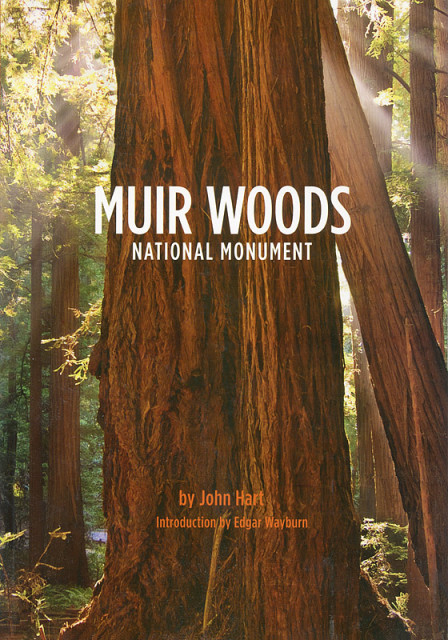
EXCERPT
To step into the shade of a redwood forest is a little like entering deep water. The sun that was bright outside becomes a small, distant object, hardly glimpsed through the branches far above, its rays absorbed by wood and chlorophyll. If it was hot outside the grove, it will be cooler here. If it was dry out there, it will be moister here. If a breeze was blowing out there, in here the air is likely to be still.
Along with the change in air comes an alteration of scale. We are accustomed to trees that are ten to twenty times as tall as we are. Increase that to forty times human height, and we don’t quite grasp what we’re seeing. Still less when many such trees stand together, and we, punily, among them. We look then at the mass of the trunks, but perception stumbles again: they rise so high and taper so slowly that even a stem that is twelve feet through seems slender.
William Kent, who gave Muir Woods to the people, put his finger on it. “Our ideas of dimension are all at fault. We expect something that will strike and challenge the eye in trees that measure their diameter in terms of fathoms and that climb as straight, clear columns two hundred feet without a limb.” He exaggerated, a bit; but redwoods make people do that.
Die Muir Wälder. Национальный памятник. 墨爾紅木公園 – brochures tell the story in four alphabets, eight languages; there is demand for as many more. Listen a few minutes by the trailside on a Saturday, and you’ll hear a good number of these tongues. Around the massive red-brown boles the visitors flock, and angle their necks to see, and click their cameras, and ask and answer.
One of the first parks ever set aside for the coast redwood, named for a great and talkative conservationist who had little to do with its saving, Muir Woods now is an emblem. It represents the redwoods in a way in which other and greater redwood parks, on other and greater redwood-bordered streams farther away from the city, do not. For multitudes over the decades, these redwoods, so close to San Francisco and a stop on numerous tours, have been the redwoods: perhaps the only ones they will ever see.
Yet it is possible to walk through Muir Woods quickly and take in rather little, to come away with nothing but a vague sense of coolness and postcard grandeur. That’s inevitable, even appropriate. This is a place where nothing happens fast. In a forest of Sequoia sempervirens, time itself is the amazement; slowness, the very marvel.
REVIEWS
Thank you so much for your beautiful and knowing words that have inspired us to create our new Muir Woods book. — Robert Lieber, Golden Gate National Parks Association, 12-10.
PURCHASE
Signed copy $13 plus shipping